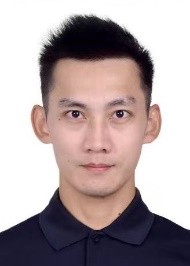
1、基本情况
黄江,男,汉族,江西上饶人,出生于1997年7月,工学博士。
E-mail: jianghuang@ynau.edu.cn。
2、教育及工作经历(自大学开始)
2014年9月-2018年6月,吉林农业大学资源与环境学院,环境工程专业,工学学士。
2018年9月-2021年6月,吉林农业大学资源与环境学院,环境工程专业,理学硕士。
2021年9月-2025年6月,河海大学环境学院,环境科学与工程专业,工学博士。
2024年11月-2025年4月,米兰理工大学化学学院,环境化学专业,联合培养。
2025年9月-至今,云南农业大学资源与环境学院,教学科研岗位。
3、主要研究方向
有机固体废弃物资源化与环境修复。
4、承担的科研项目
(1)基于双模型耦合评估生物炭在环境修复中的真实效益,河海大学研究生科研创新计划项目,1061/B23017010264,主持。
(2)Understanding the interactions of micro- and nanoplastics with natural organic matter: Eco-corona formation, mechanism insights, and environmental implications,国家自然科学基金青年项目,52250410354,参与。
(3)运用形态种分离与拉曼光谱技术研究淀山湖微囊藻时空格局,国家自然科学基金面上项目,32071569,参与。
5、科研成果(不限于以下成果)
(1)Huang, J., Tan, X.*, Duan, Z.P., Liang, J., Zhu, R., Chen, S.C. Unveiling the hidden environmental risk of biochar: Take colony-forming Microcystis as biotoxicological indicator. Journal of Environmental Chemical Engineering, 2025, 13.
(2)Huang, J., Tan, X.*, Ali, I., Xie, Y., Duan, Z.P. Exploring the effect of Ulva prolifera components on the biochar carbon sequestration potential. Journal of Cleaner Production, 2024, 484.
(3)Huang, J., Tan, X.*, Ali, I., Ok, Y., Duan, Z.P., Liang, J., Zhu, R. Efficient removal of nanoplastics by iron-modified biochar: Understanding the removal mechanisms. Environmental Pollution, 2024, 363.
(4)Huang, J., Tan, X.*, Xie, Y., Wu, X.G., Dahn, S., Duan, Z.P., Ali, I., Cao, J., Ruan, Y.L. A new approach to explore and assess the sustainable remediation of chromium-contaminated wastewater by biochar based on 3E model. Chemosphere, 2024, 353.
(5)Huang, J., Tan, X.*, Ali, I., Duan, Z.P., Naz, I., Cao, J., Ruan, Y.L., Wang, Y.M. More effective application of biochar-based immobilization technology in the environment: Understanding the role of biochar. Science of the Total Environment, 2023, 872.
(6)Huang, J., Wang, J.H.*, Jia, L. Removal of zinc(II) from livestock and poultry sewage by a zinc(II) resistant bacteria. Scientific Reports, 2020, 10.
(7)Huang, J., Wang, J.H.*, Wang, S.H., Guo, S.W. Different biochars as microbial immobilization substrates for efficient copper II removal. Spectroscopy Letters, 2020, 53.

